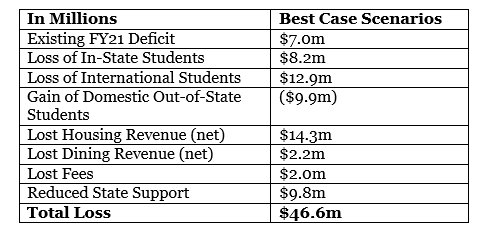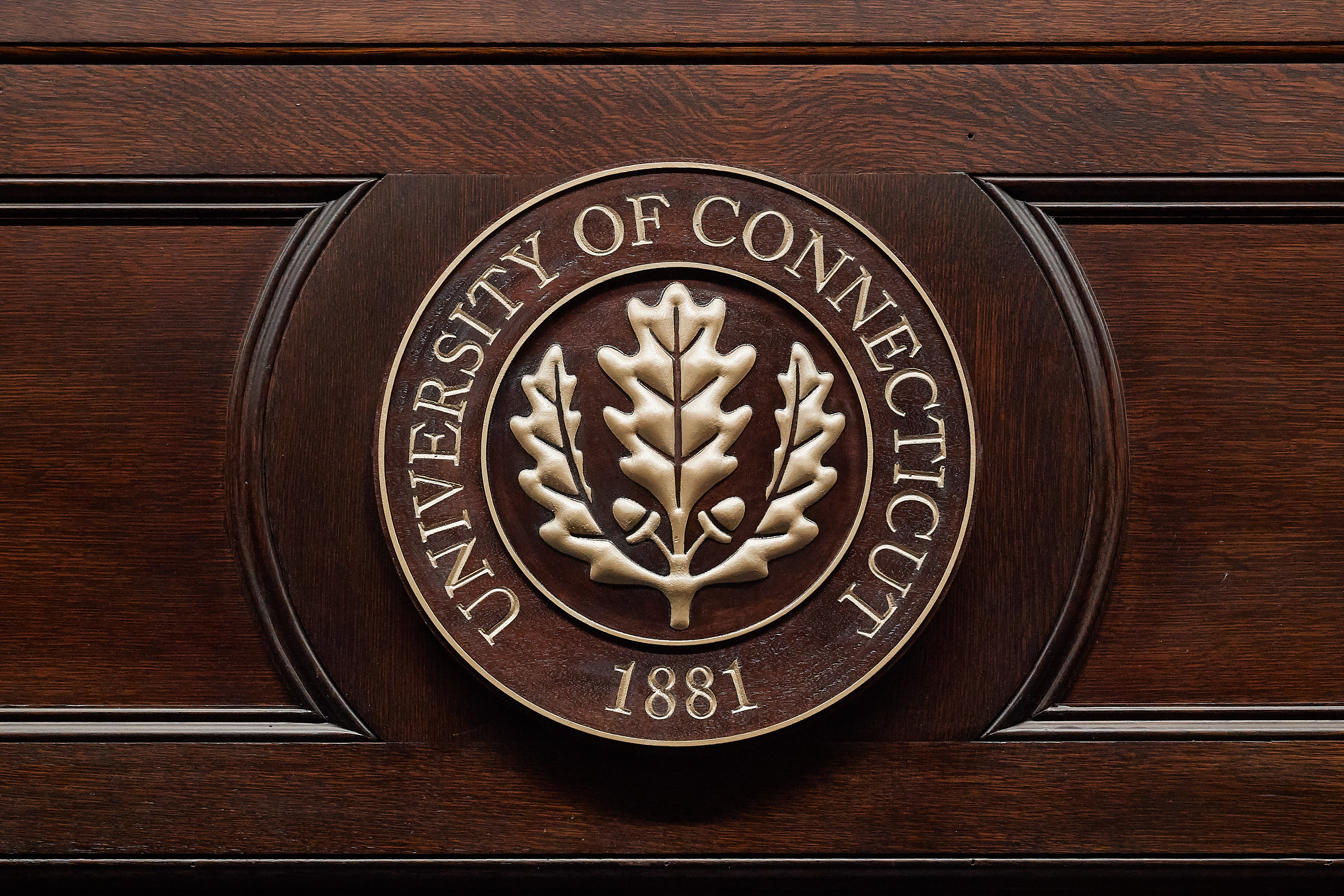Dear Colleagues,
I write to you today with an update on our fiscal situation and what the coming months may hold for us.
Last month, the University presented our spending plan for fiscal year 2021 to the Board of Trustees, which approved it. It assumes that under a best-case scenario, Storrs and the regional campuses will face a deficit of approximately $47 million next year associated with losses in the fall semester alone. Under the worst-case scenario, the deficit would be $129 million.
As always, the decisions we make, and which scenario we are in, will be based on public health and safety as the virus and the tools we have to combat it evolve. We will return to the board on a quarterly basis to offer an updated financial picture and discuss our progress toward closing our expected deficit.
Before COVID-19, UConn Storrs/regionals were on track to finish slightly ahead of budget, but for the state’s unfunded liability costs, which created a deficit of $7 million. Under the best-case scenario, here is how our existing $7 million estimated shortfall ballooned into an estimated $47 million:

The worst-case scenario estimates reflect the potential for a dramatic deepening of each of these losses based on the circumstances we might face, which would drive the deficit well over $100 million.
UConn Health is projecting a $114.9 million deficit for fiscal year 2021. This is composed of $59 million in COVID-19 related revenue losses and $55.9 in current operations driven by the state’s unfunded legacy costs.
Like all health systems in the state, UConn Health ceased performing elective procedures and surgeries during the pandemic, and as a result it sustained losses in clinical revenue at the peak of the pandemic of more than $1 million per day. UConn Health has recently resumed elective procedures and surgeries, but based on current projections, does not anticipate returning to pre-COVID levels until April 2021.
These are the most significant deficits we have ever faced. The same is true of many, if not most, of our peers. We cannot close these deficits by relying on any one avenue; we will need to utilize every cost-savings and revenue-enhancing lever available to us. This means we must evaluate significant strategic cuts in spending, eliminating programs, increasing class sizes, spending down available fund balances to the extent possible, growing entrepreneurial programs, consolidating or expanding auxiliary services, and reducing workforce costs.
To reduce the cost of our management workforce, beginning this month many non-union managers will be required to take 12 furlough days, or a pay reduction of about 5%. The most senior and highly compensated managers, including me, will take 24 furlough days, for a pay reduction of about 10%. We have also approached our unions for assistance.
Should our financial picture dramatically and unexpectedly improve, we would look to reducing the number of required furlough days.
Cutting costs will impact numerous aspects of the University. For example, last week the board approved a plan to cut $10 million from the Athletics budget, or 25% of its university subsidy, which will result in the painful elimination of four sports.
At the same time, we maintain the commitment to not cause long-term damage to UConn and its people. To remain true to the goal of preventing long-term harm to our educational and research mission means careful consideration of the impacts of those cuts. This will inevitably result in even greater pressure to increase the reductions in other areas.
I have been asked about the state’s role in helping UConn and UConn Health to address our serious financial challenges. While it is unrealistic to assume the state will be able to solve all of our fiscal problems, I strongly believe the state does have a role in assisting UConn. This includes keeping our heads above water through the state appropriation, helping us contend with COVID-related costs, and covering the state’s unfunded legacy costs. I have been and will continue to advocate for this with our state elected officials.
As we aggressively seek that significant support from the state, it is essential that we at UConn be equally aggressive in taking important deficit mitigation steps on our own. I believe this will not only help us to reduce our deficit, but will also improve the likelihood that the state will offer us the additional support we are requesting. This is because we will have demonstrated our willingness and ability to meet the state part way. This is a painful task and we do not welcome it, but we have no reasonable alternative.
I apologize for taking so much of your time with a long memo all on finances. But we must take responsible and proactive actions now in order to effectively weather the storm. My hope is that the current fiscal woes we have before us will be a short-term problem, and I want to thank the entire University community for its understanding, flexibility, and perseverance as we work through it together. My cautious optimism comes from my belief that the value proposition for a residential research university, especially a flagship public institution like UConn, has never been greater.
I very much look forward to getting back to a focus on our mission, including education, care and research that transforms lives and advances social justice and quality of life.
Sincerely,
Tom



